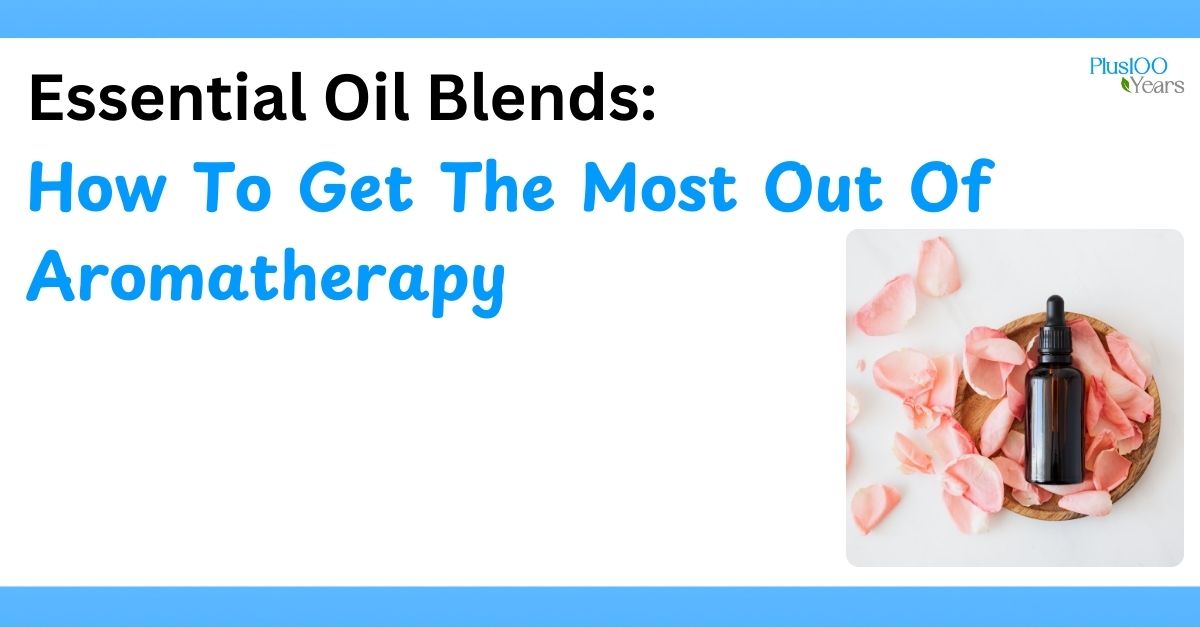
Aromatherapy, the practice of employing essential oils for medicinal reasons, has existed for millennia.
It provides a natural approach to improving physical, emotional, and mental well-being.
Essential oils are concentrated plant extracts that encapsulate the essence of a plant's fragrance and health benefits. Combining these oils may create potent mixtures that increase their effectiveness.
In this article, we'll look at the advantages of essential oil mixes, how to make them, and how to get the most from aromatherapy.
Benefits of Essential Oils
Before blending, let's examine the various essential oils and their advantages. Lavender oil calms the body and mind, eucalyptus is a natural decongestant, and sweet orange's uplifting smell can help boost your spirits.
Each oil has a distinct function, and by carefully mixing them, you may maximize their advantages and create a deep therapeutic experience.
For example, the crisp perfume of peppermint oil has been shown to ease headaches, but the warm and spicy tones of cinnamon can aid in the fight against infections.
Combined with other oils, their qualities can be expanded to improve many aspects of life, such as mental clarity, digestive health, and bodily well-being.
How to Make Essential Oil Blends
Essential oil blends are created by selecting oils that complement one another in terms of fragrance and medicinal effects. Here's a step-by-step instructions:
1. Understand the Basics
Essential oils are divided into top, middle, and base notes, which work together to form a balanced and harmonic combination.
● Top notes are the first scents you detect, often bright and uplifting. They disappear rapidly. Lemon, eucalyptus, and peppermint are some examples of essential oils.
● Middle Notes: These are the core of the mix and have a stronger smell. They provide depth and balance. Examples include lavender, rosemary oil, and geranium.
● The base notes constitute the mix's foundation and have the longest-lasting smell. They are typically rich and profound, such as Sandalwood, patchouli, and cedarwood.
2. Select your oils
Choose essential oils based on your desired therapeutic impact and smell profile. For example, if you want to improve attention and clarity, you may use rosemary oil, peppermint essential oil, and lemon.
3. Determine the ratio
A typical essential oil mixing ratio is 30% top notes, 50% middle notes, and 20% base notes. This results in a balanced mix that changes over time as the various notes are unleashed.
4. Mix the oils
Blend the essential oils in the desired ratio in a tiny glass container. For a 10 ml mix, you may use:
● 3 ml (30%) Top Notes
● 5 ml (50%) The middle notes
● 2 ml (20%) Base Notes
5. Add Carrier Oil
Essential oils are considered highly potent and must be infused with carrier oils such as sweet almonds, jojoba, and coconut oil. This makes the mix safe for use on different body parts and spreads the essential oils evenly. A typical dilution ratio is 2-3% essential oil to carrier oil or approximately 12-18 drops per 30 ml (1 oz) of carrier oil.
6. Store and Let the Mixture Mature
Store your mix in a dark glass bottle to preserve it from light and heat. Allow the combination to develop for at least 24 hours to combine the fragrances.
How to Use Essential Oil Blends?
1. Diffusion
Using a diffuser is one of the most convenient methods for enjoying the advantages of essential oil mixes. Add a few drops of your blend to the water-based diffuser and let the aromatic molecules distribute into the air.
2. Topical Applications
Mix essential oil with carrier oil before applying it to your skin. Common locations include the wrists, neck, temples, and soles of the feet. This procedure permits the oils to be absorbed into your circulation and exerts systemic benefits.
3. Inhalation
Place a few drops of your essential oil mix in a bowl of steaming hot water, cover your head with any cloth covering till your neck, and inhale the steam. This is very useful for respiratory issues.
4. Bathing
Add your preferred essential oil combination to a warm bath. The steam will assist in disseminating the oils, enabling you to inhale them while simultaneously absorbing them through your skin.
5. Massage
Make a massage oil by diluting an essential oil combination with a carrier oil. Massage this combination into your muscles to reduce stress and promote relaxation.
Safety considerations
While essential oils are natural, they are strong and must be used cautiously.
● Dilution: Before using essential oils, always remember to mix them with carrier oil to avoid any reactions.
● Patch Test: Before utilizing a new essential oil mix, perform a patch test to ensure no allergic response.
● Avoid Sensitive Areas: Avoid using essential oils on sensitive regions like your eyes and mucous membranes.
● Consult a professional. If you are expecting a baby, breastfeeding, or have a particular medical condition, see a doctor before using essential oils.
Conclusion
Creating and utilizing essential oil mixes may significantly improve your aromatherapy experience.
Understanding the qualities and interactions of various essential oils allows you to create blends suited to your requirements.
Whether you want to enhance your energy, unwind after a long day, or strengthen your immune system, there is a mix for you.
Experiment with various mixes and application techniques to see what works best for you. The possibilities are limitless with essential oils like rosemary, peppermint, lavender, and tea tree oil in your arsenal. Start blending and experience the soothing advantages of aromatherapy.
Add new comment